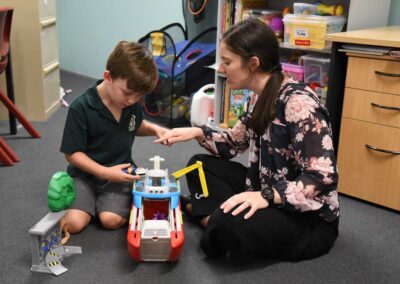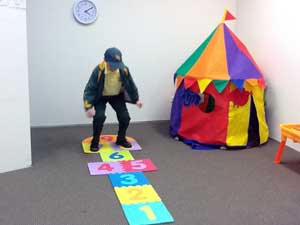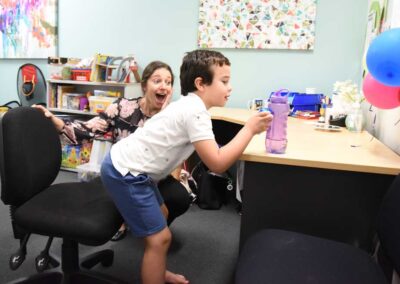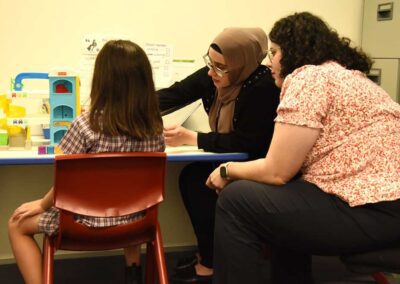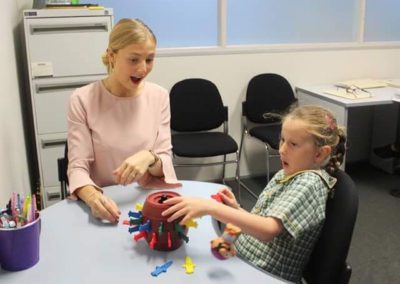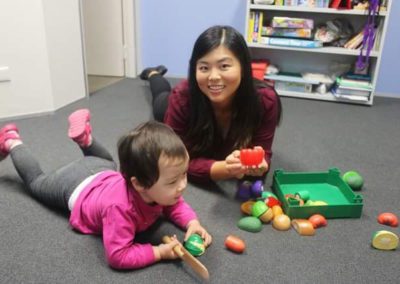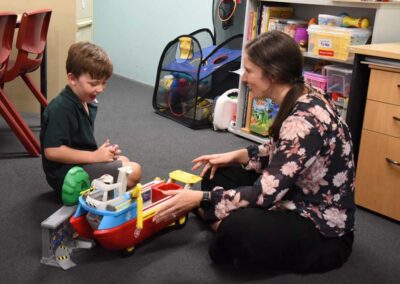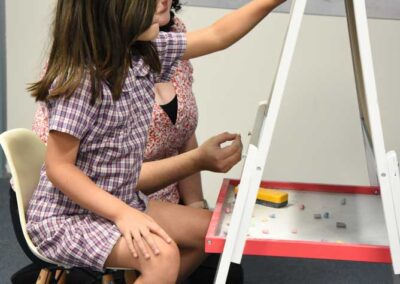You may be familiar with gestalt language processing (GLP) and you may be aware that many autistic children (but not all) process language this way. GLP is a natural and normal way for some children to acquire language. Despite its prevalence, GLP is often misunderstood, sometimes even mistaken for a language disorder. However, GLP is not a diagnosis—it’s simply one way that language can naturally develop.
What is Gestalt Language Processing?
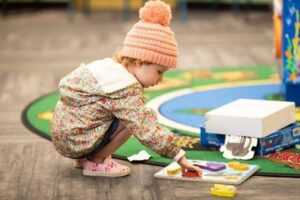 GLP is a way in which some children develop language by using whole phrases or “gestalts” before breaking them down into smaller parts. This is in contrast to analytic language processors (ALPs), who typically develop language by learning individual words and gradually combining them into sentences.
GLP is a way in which some children develop language by using whole phrases or “gestalts” before breaking them down into smaller parts. This is in contrast to analytic language processors (ALPs), who typically develop language by learning individual words and gradually combining them into sentences.
GLP follows a natural developmental path described by the framework of Natural Language Acquisition (NLA). Just like ALPs, some gestalt language processors move through the stages of NLA effortlessly, while others may benefit from support to progress through these stages. It’s important to remember that GLP is not specific to any one demographic. While many autistic individuals are GLPs, not all GLPs are autistic—and not all autistic individuals are GLPs.
A Natural Process, Not a Disorder
Because GLP is a natural process, it’s not something that needs to be “fixed” or changed. It’s simply a different way of acquiring language. So why do some gestalt language processors go undetected, while others may get stuck along their developmental path? There are several factors that can influence this, including:
- Sensory Processing: Difficulties in sensory processing can make it challenging for a child to function at their
 optimal learning or engagement level, leading them to rely more on gestalts from media to communicate. When a child is regularly overwhelmed with sensory input, they are more likely to use scripts that are well known than to generate novel utterances.
optimal learning or engagement level, leading them to rely more on gestalts from media to communicate. When a child is regularly overwhelmed with sensory input, they are more likely to use scripts that are well known than to generate novel utterances. - Motor Planning: Motor planning issues can impact a child’s ability to produce spontaneous language, making them more dependent on pre-learned phrases. The motor plan for the gestalts they have has already been learned, whereas novel utterances require new motor plans that may be difficult to access.
- Analytic Language Approaches: Traditional language interventions focused on single words, answering wh-questions and using carrier phrases and sentences strips, does not align with how GLPs naturally develop language. When traditional approaches are used with GLPs, their language gets stuck and does not progress.
- Cognitive Processing: Cognitive processing differences can make it challenging for a child to keep up with the fast pace of real-life interactions, leading them to rely more on gestalts.
- Media and Language Models: The prevalence of media in our society has changed the language models that children are exposed to. While media can provide rich, intonation-filled language, it can also lead to the acquisition of long, complex gestalts that are difficult to break down and use flexibly in everyday life.
Supporting Gestalt Language Processors
When working with gestalt language processors, our goal should be to support their natural language development, not to rush or “correct” it. Just as we wouldn’t expect an ALP at the single-word stage to produce grammatically correct sentences, we shouldn’t expect a GLP to generate spontaneous, original language until they’ve naturally moved through the stages of NLA. You can read more about the NLA stages here.
It’s crucial for us as speech pathologists to recognise that a child’s journey through language development is unique and valid, regardless of whether they are an ALP or a GLP. Gestalt language processors may take a different path, but it’s one that can be supported with the right understanding and approach.
Final Thoughts
Gestalt language processing is a natural and normal way for many children to develop language. It’s not a disorder or a problem to be fixed, but rather a unique approach that requires tailored support. By understanding and respecting the GLP pathway, we can help these children develop robust and functional communication skills, allowing them to thrive using flexible and original language.
As we continue to work with children who are gestalt language processors, let’s remember that their language journey is just as natural as any other. By offering the right support and guidance, we can ensure that they reach their full potential. To learn more about how to support GLPs look at https://www.meaningfulspeech.com/course and https://communicationdevelopmentcenter.com/
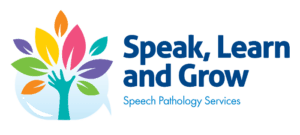

 optimal learning or engagement level, leading them to rely more on gestalts from media to communicate. When a child is regularly overwhelmed with sensory input, they are more likely to use scripts that are well known than to generate novel utterances.
optimal learning or engagement level, leading them to rely more on gestalts from media to communicate. When a child is regularly overwhelmed with sensory input, they are more likely to use scripts that are well known than to generate novel utterances. 
